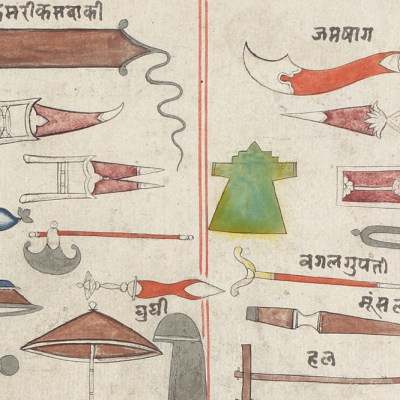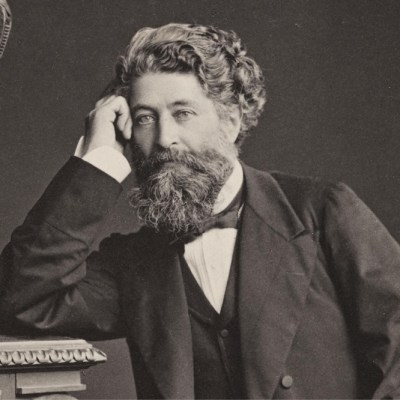This preview covers the second leg of Asian Art in London, focusing on East Asian art, which takes place from 28 October–6 November. A preview of the second part of the event, focusing on Indian and Islamic Art art (until 31 October), was published last week.
East Asia is the focus of the second week of Asian Art in London (AAL). Hailing from across the territories of China, Korea and Japan, the objects on view range in age from, for example, a bronze buckle ornament with turquoise and red agate inlay, made in the Western Han Dynasty (202 BC– AD 9) and presented online by the Hong Kong dealership Lam & Co Antiquities, to contemporary Japanese lacquer, including Heaven’s Sculpture #1 Ten no Zo (2021) by Azusa Irizawa, showing with Simon Pilling.
Buckle ornament (Western Han dynasty; 202 BC–AD 9), China. Lam & Co Antiquities (price on application)
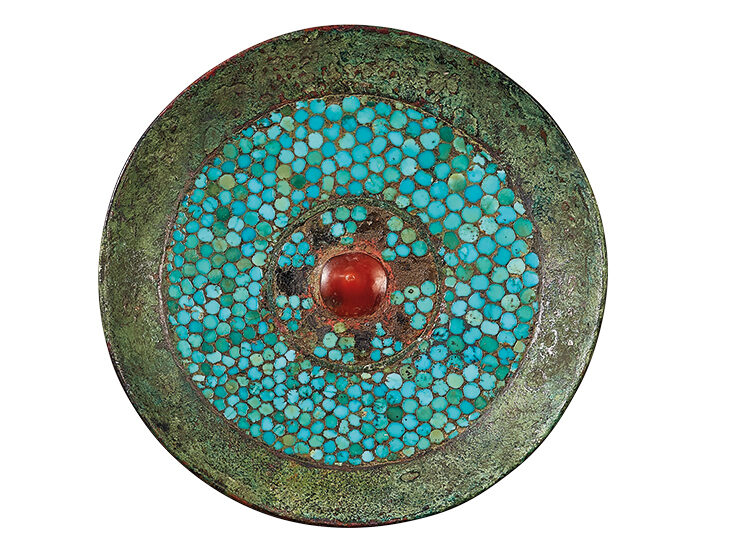
Reminding us that London has long been a centre for collecting and scholarship about East Asian ceramics, SOAS is running ‘Collectors, Curators, Connoisseurs: 100 Years of The Oriental Ceramic Society’ until 11 December. The curator is Sarah Wong, a director at Eskenazi, which is mounting its first exhibition dedicated to the Tang Dynasty (AD 618–907) since 1987. Among examples of ceramics, metalwork, textiles and sculpture from this golden period are a fine sancai-glazed zodiac figure of a kneeling human with horse head, and an outstanding sancai-glazed earthenware ewer, one of only two known examples with a striking columnar mouth. Perhaps the rarest piece of all, however, is a dry lacquer head of a bodhisattva, one of a very small group of surviving sculptures made through this labour-intensive process in the Sui and Tang Dynasties.
John Eskenazi, meanwhile, is showing a bold black-ground thangka depicting Panjarnata Mahakala (Lord of the Pavilion), surrounded by deities and lamas. Created with evangelical fervour by an artist in Tibet in the late 17th or early 18th century, it reveals, Eskenazi says, ‘the influence of earlier Indian, Nepalese and Tibetan traditions’, but combined ‘with elements of Chinese style and technique’ to create a beautiful image that is also deeply spiritual.
Priestley & Ferraro, on Bury Street, is running two parallel exhibitions, ‘Sinews of Stone: Jade Carving in the Ming Dynasty’ and ‘Early Chinese Ceramics and Works of Art’. A star piece in the latter show is a rare imitation-stone door from the Tang dynasty, finely carved with dancing boys, mandarin ducks and flowers, a true gateway to paradise.
Pair of Chinese porcelain famille-verte vases dating to 1701. Marchant (price on application)
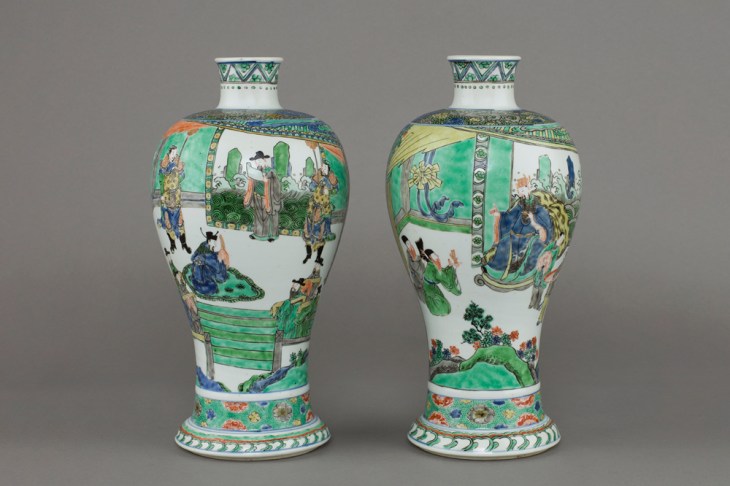
Meanwhile, Littleton & Hennessy, an art advisory group based on Duke Street and specialising in Asian works of art, has put together a show titled ‘New Forms – Song/Yuan’. As consultant Mark Slaats explains: ‘You see all these new shapes and experimental glazes coming through, which become staples in later dynasties.’ The highly varied selection of 35 pieces includes a rare Longquan Guan-type censer from the Southern Song or Yuan dynasty (13th–14th century) with a soft green glaze. After putting on an exhibition of Kangxi famille-verte porcelain in 2017, Marchant now has a second presentation of 18 pieces from notable private collections, highlights of which include a pair of enamelled meiping vases dating to 1701.
Susan Page specialises in Chinese snuff bottles, a high art form in the 18th and 19th centuries, in glass, porcelain and stone. This year her offerings include a snuff bottle carved from agate, revealing the silhouette of a scholar inscribing into rock, beside a tree.
Snuff bottle (1780–1850), China. Susan Page (price on application)
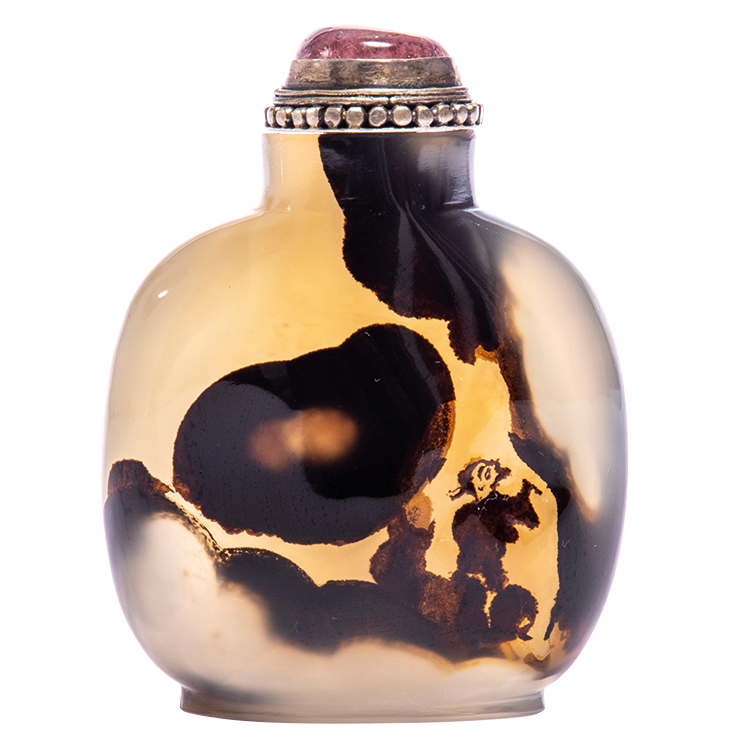
Bringing things up to the present day the Mayor Gallery, in its first outing at AAL, is showing a selection of works on paper and paintings by modern Chinese and Japanese artists of the 1950s and ’60s. Michael Goedhuis will show contemporary Chinese ink paintings, while Aktis Gallery is presenting ‘China on the Global Art Scene’, which features work by three of the most influential Chinese émigré artists of recent times: Zao Wou-Ki (1921–2013), Wang Keping (b. 1949) and Gao Xingjian (b.1940).
From the November 2021 issue of Apollo. Preview and subscribe here.

